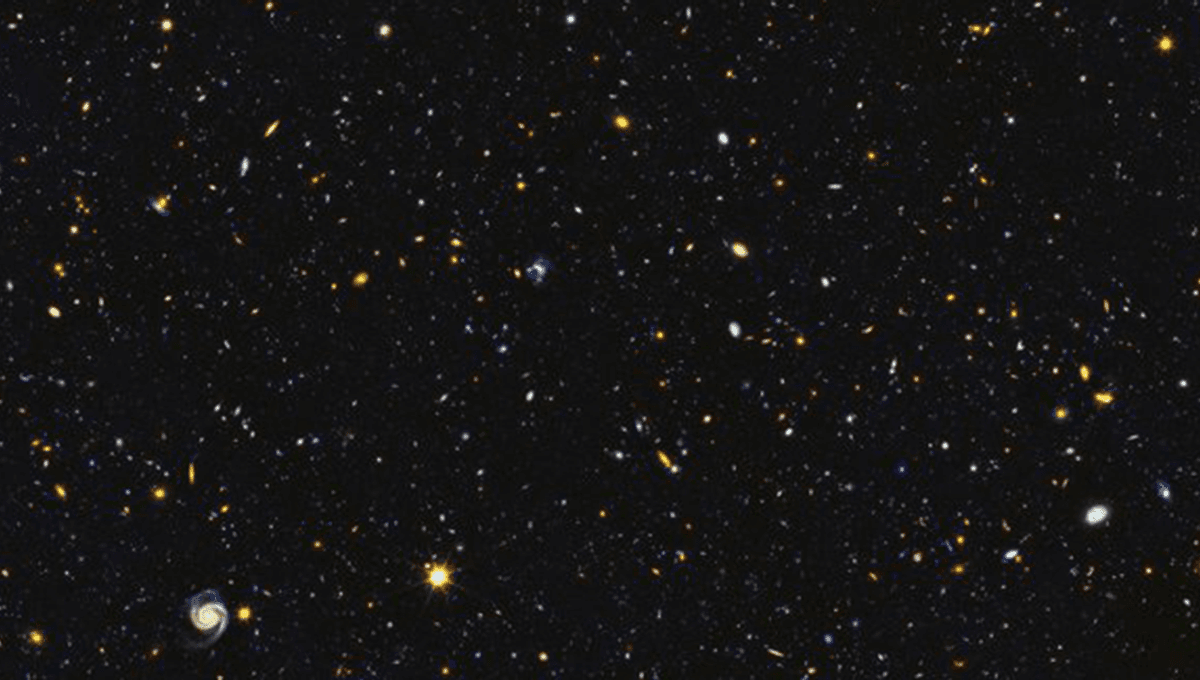
We can only see light that has made it to our vantage point, meaning that there is a limit to how much of the universe we can see – known as the observable universe – as the light has not yet made it to us.
In a static universe, the only thing stopping us from seeing those distant objects (as well as the Doppler effect) is the time it takes to get to us. In a static universe, as time went on, we would detect more and more light from distant objects and our Hubble horizon – the amount of universe we can observe – would grow.
At some point in the far-off future, the rest of the universe would become observable to us. Unfortunately, we do not live in a static universe, but one that is expanding at an estimated 73 kilometers (45.3 miles) per second per megaparsec.
As the universe expands, that changes. The distance between us and all other stars increases, and our observable universe will shrink, giving us less to observe and play with as time drags on. In the universe we believe we are in, more distant objects will disappear from our view faster and faster.
For now, our observable universe will continue to grow with the light from distant stars that can reach us, but has not had the time to reach us; one estimate says that we have only observed around 43 percent of the galaxies that we will eventually be able to observe as their light reaches us.
So, what is beyond the observable universe? The obvious answer to this is a big “we don’t know”. In fact, we will never truly know as it is, by definition, unobservable. However, that doesn’t mean we can’t know anything about it, nor make sensible guesses about what it contains.
For a start, we can (fairly confidently) assume that there is more universe beyond what we can observe.
In all directions in space, we can detect the cosmic microwave background (CMB). This is the leftover radiation from around 400,000 years after the universe began, that is faintly detectable and permeates all of the known universe. This radiation – from the first light of the universe – has been traveling to us for 13.7 billion years whichever direction we look. This tells us we are either in one typical part of a larger universe, or that we are smack bang in the middle of a universe the size of our observable universe.
As well as being able to dismiss this as unlikely based on the cosmological principle – the principle that we should not assume that we occupy a privileged region within the universe – we can test this, to an extent. There is an idea (to be filed under “likely wrong, but fun to think about”) that the observable universe could be bigger than the universe itself. If it were small enough, and sufficient time had passed, light from objects would reach us from several different directions. This would mean that in a flat universe, we could think we are seeing objects far in the distant reaches of the universe when really we are seeing the light of a near (or nearer) object that has reached us from the other direction.
Looking for evidence would be difficult. Say light from a galaxy took 9 billion years to get to you from one direction, and 4 billion years from another. You would see the same galaxy at two different stages of its life, making it a mammoth task to deduce that they are they are in fact the same galaxy. However, teams have looked for evidence of this in the form of duplicated circles in the CMB, though no evidence has been found to support the idea, suggesting the universe is indeed bigger than the observable universe.
Assuming the universe is bigger than the observable universe, we could also be able to detect the influence of objects outside our observable universe on objects towards our observable universe’s edge. To some controversy, one team has claimed to have found just this while observing distant galaxy clusters using NASA’s Wilkinson Microwave Anisotropy Probe. The team claimed to have observed movement of these clusters suggesting that they are caused by the gravitational influence of objects beyond our observable universe.
“The clusters show a small but measurable velocity that is independent of the universe’s expansion and does not change as distances increase,” lead researcher Alexander Kashlinsky at NASA’s Goddard Space Flight Center in Greenbelt said in a 2013 press release, adding “the distribution of matter in the observed universe cannot account for this motion.”
An object large enough to create this “dark flow”, as the team termed it, would imply that the universe is not uniform (on larger scales) in all directions, leading some to suggest that it is in fact evidence of another universe rubbing up against our own, and others proposing a (more likely) idea that there are errors within the observations. Dark flow remains controversial, with later studies finding evidence against the idea.
Nevertheless, it could be possible in the future to detect the gravitational influence of objects beyond our observable universe. But due to the expansion of the universe and the speed limit of the universe, we will never be able to see nor influence it.
All “explainer” articles are confirmed by fact checkers to be correct at time of publishing. Text, images, and links may be edited, removed, or added to at a later date to keep information current.
Source Link: How Do We Know There Is Anything Beyond The Observable Universe?